Done with high-maintenance hydrangeas? We've found 7 alternatives that are so much easier to grow – you'll be thanking yourself next summer
A combination of drought and heat is never good for hydrangeas, so if weather conditions are affecting your plants here's what to grow instead
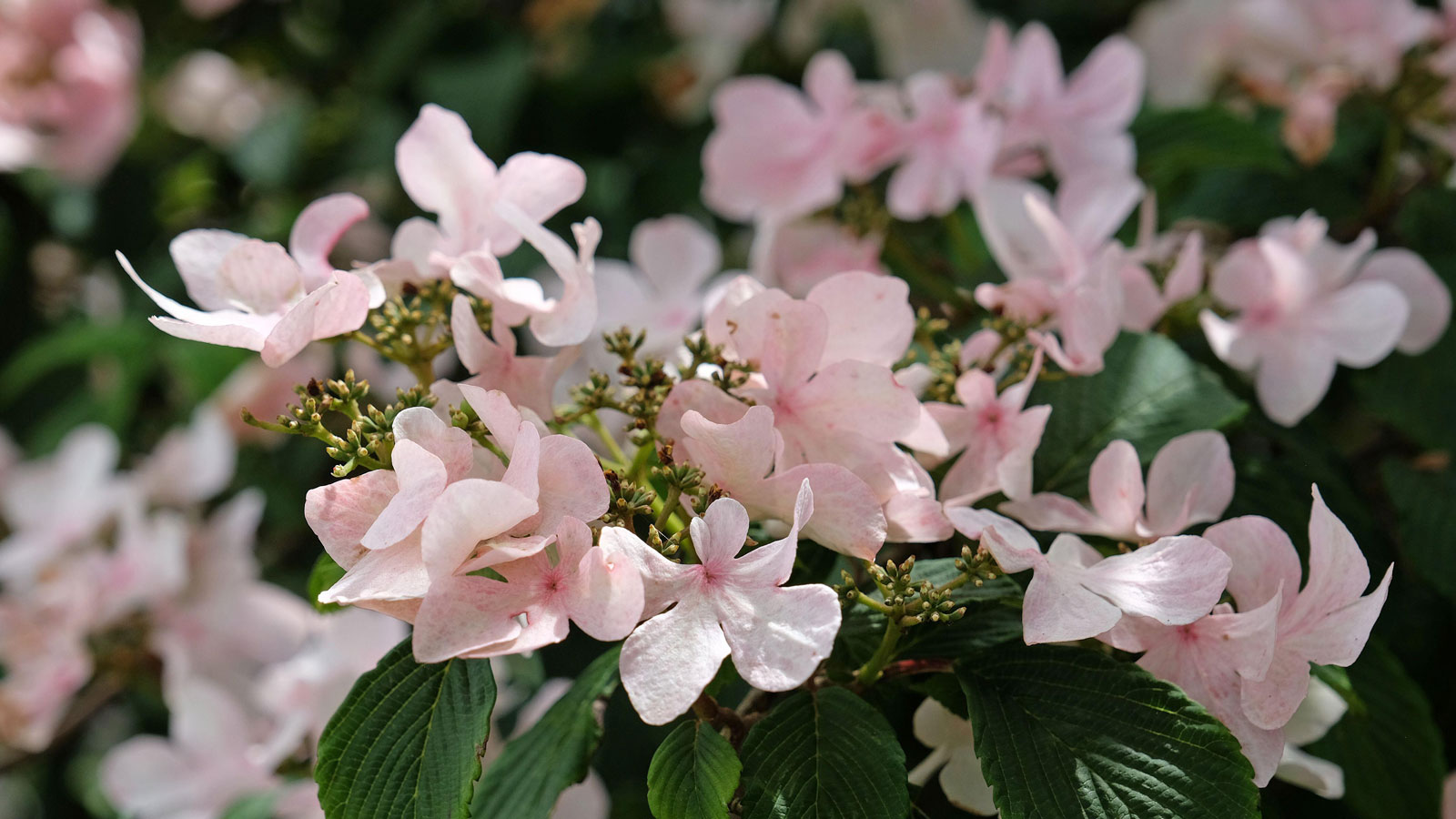

If you're looking for hydrangea alternatives, it's likely your plants are underperforming and you're underwhelmed by them. Their poor show could be due to a variety of reasons that include choosing diva types of hydrangea rather than the easier ones, growing them in the wrong conditions, or simply that the drought-like conditions hydrangeas dislike are becoming more prevalent.
If you don't have time to move parasols round the garden to shade your hydrangea plants during the day, or set up a drip irrigation system to attend to their watering needs, it's time to choose lower-maintenance hydrangea alternatives. There are many easier options if you look at the best flowering shrubs that will catch the eye with their statement flowers and luxuriant foliage.
We asked experts for their flowering shrub recommendations to replace notoriously fussy hydrangeas. And just in case you're not quite ready to give up growing hydrangeas just yet we also have expert suggestions for some less demanding varieties of these beauties to try in your garden and increase your chances of success.
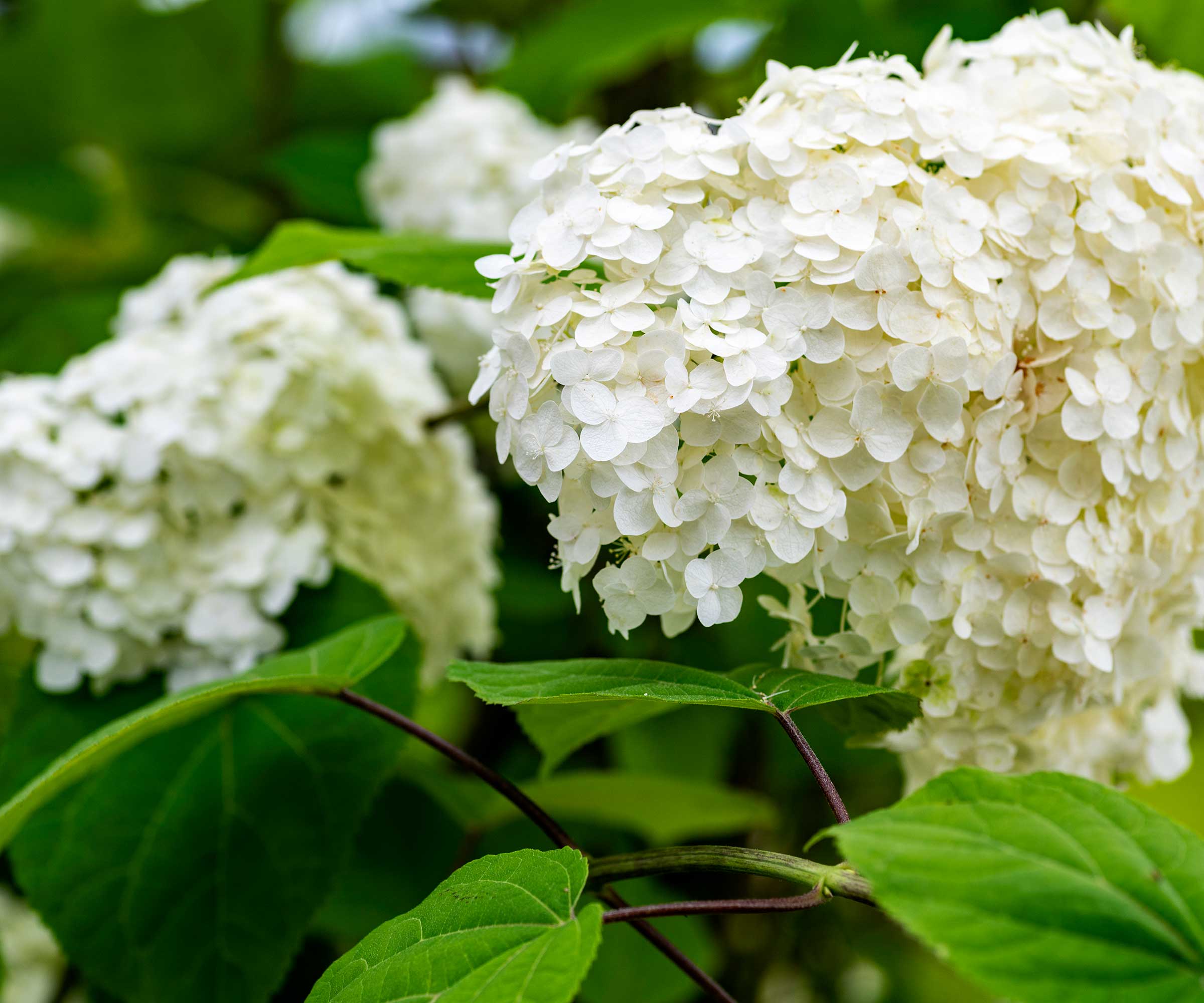
We love hydrangeas but they can be temperamental
7 easy hydrangea alternatives
There's been a lot written lately about how the trend for these garden faves may be ebbing. Now many gardeners are turning away from hydrangeas it's time to find out which plants are going to steal the show in 2026 when it comes to finding the best hydrangea alternatives.
Take a look at these expert suggestions as there's bound to be one that suits your space.
1. Viburnum
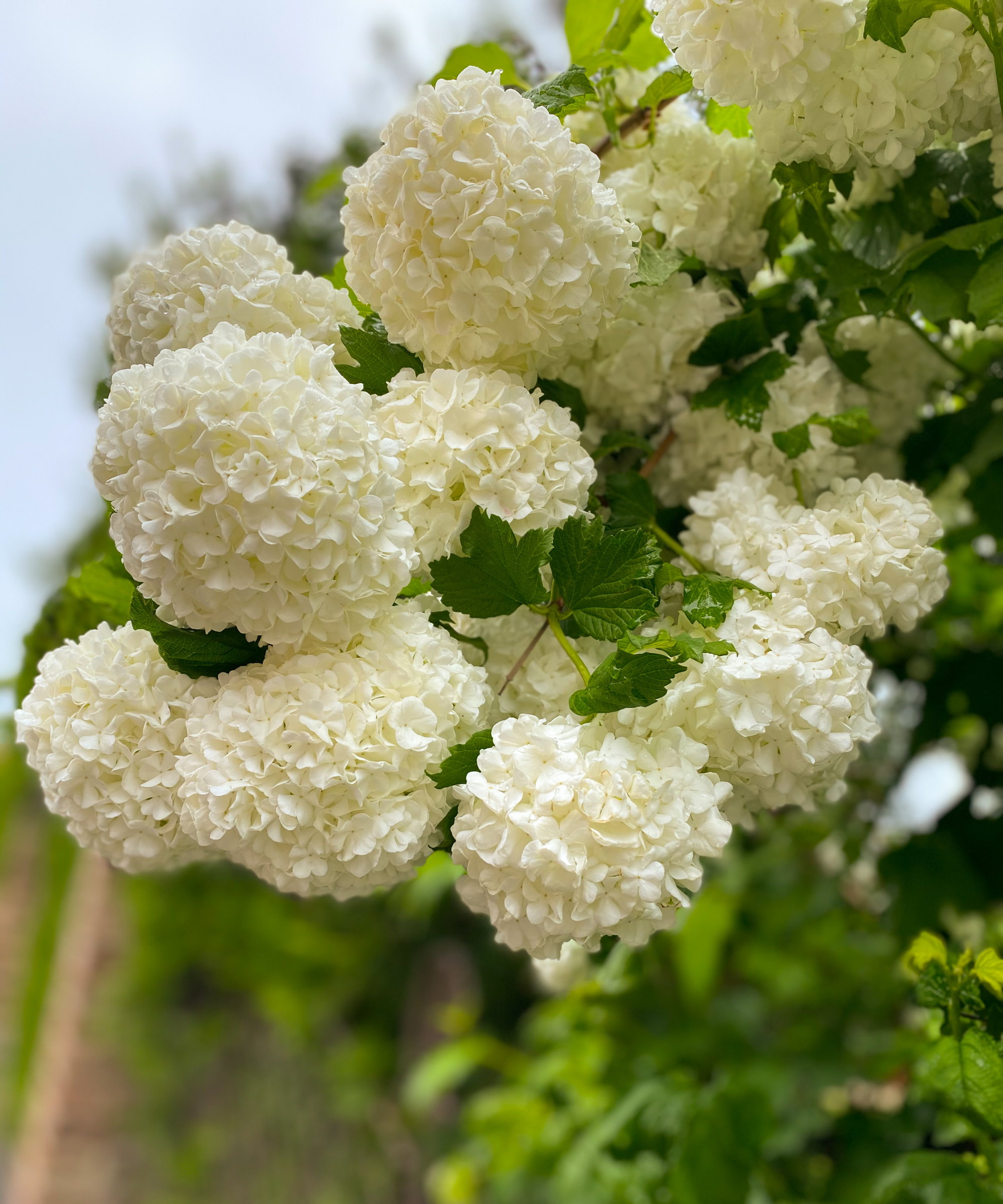
'If you're looking for a high-quality garden plant that isn't too demanding, I suggest going for a viburnum instead of hydrangeas,' says floral expert Stephen Kohley. 'Hydrangeas are beautiful but can be high maintenance.
They require regular pruning, need to be watered consistently (they LOVE water), and you have to adjust the soil pH if you want to change their color.'
Design expertise in your inbox – from inspiring decorating ideas and beautiful celebrity homes to practical gardening advice and shopping round-ups.
On the other hand, says Stephen, viburnum plants are more simple, and once they're settled in, they're happy. They're drought-resistant, don't react negatively to pests, and aren't picky about the soil.
Their blooming season also brings beautiful flowers, lush foliage, and some types even have colorful berries that attract birds during the fall. When you choose to plant viburnum, pick a place that gets full sun to partial shade, and make sure the soil drains well.
'Looking ahead to 2026, I think more gardeners will lean toward viburnum largely due to its strength against climate variations,' says Stephen. 'This includes increasing instances of hot summers, unexpected frosts, and dry spells, all of which can throw hydrangeas for a loop, reducing their blooms and increasing their need for care.
'Viburnum's minimal water requirements and sturdy nature might just make it the more popular pick as we face these growing challenges.'
Stephen Kohley is a floral expert and the owner of Sonny Alexander Flowers. For nearly a century, Stephen and his team have shared their passion for flowers, ensuring that every customer experiences the personal touch that defines their work. Proudly family-owned and operated, they deliver high-quality flowers and exceptional design services across the greater Los Angeles area.
2. American beautyberry
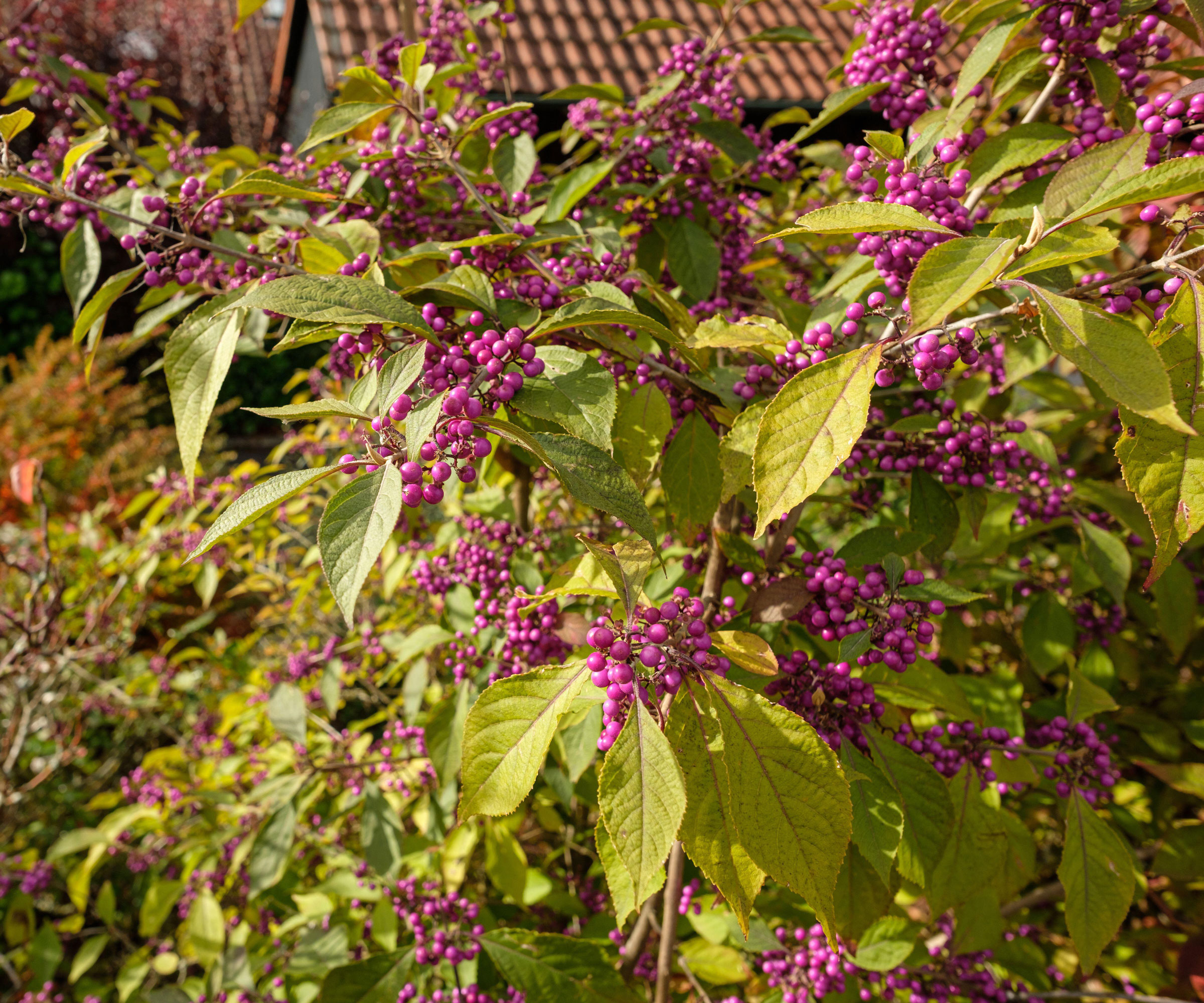
In some areas hydrangeas won't survive baking summers if they're planted in the garden rather than in containers you can move to shade, so you will have to start with new plants every year.
'In south Texas where I'm based, there are few plant varieties that compare to the impressive blooming power of the hydrangea,' says landscaping expert Chris Verme. 'Unfortunately, in our area of the country, hydrangeas are more often a seasonal plant (annual) rather than an evergreen or perennial.'
One of Chris' favorite hydrangea alternatives is the American beautyberry. 'This would be a fun choice for the slightly more shaded spaces of the garden. Beautyberry provides a similar pop of color in the fall (in this case purple) and is hardy through the toughest winters or summers in south Texas. The leaf pattern of an American beautyberry is also similar to the hydrangea.'
We're fans of beautyberry too. In fact, this variety makes it on to our list of the best shrubs with winter berries. This deciduous shrub thrives in the south-eastern United States and looks spectacular in fall. Find out how to prune beautyberry shrubs to get the best out of them.

Chris Verme was born and raised in San Antonio, Texas and has been in horticulture for over 25 years. Chris started VHS Outdoor Living Co. in 1999 to provide artistic designs and quality builds for south Texas clients for all their landscaping and outdoor living needs. Chris loves building beautiful landscapes from the ground up to help clients turn outdoor living dreams into lasting, functional spaces.
3. Ninebark
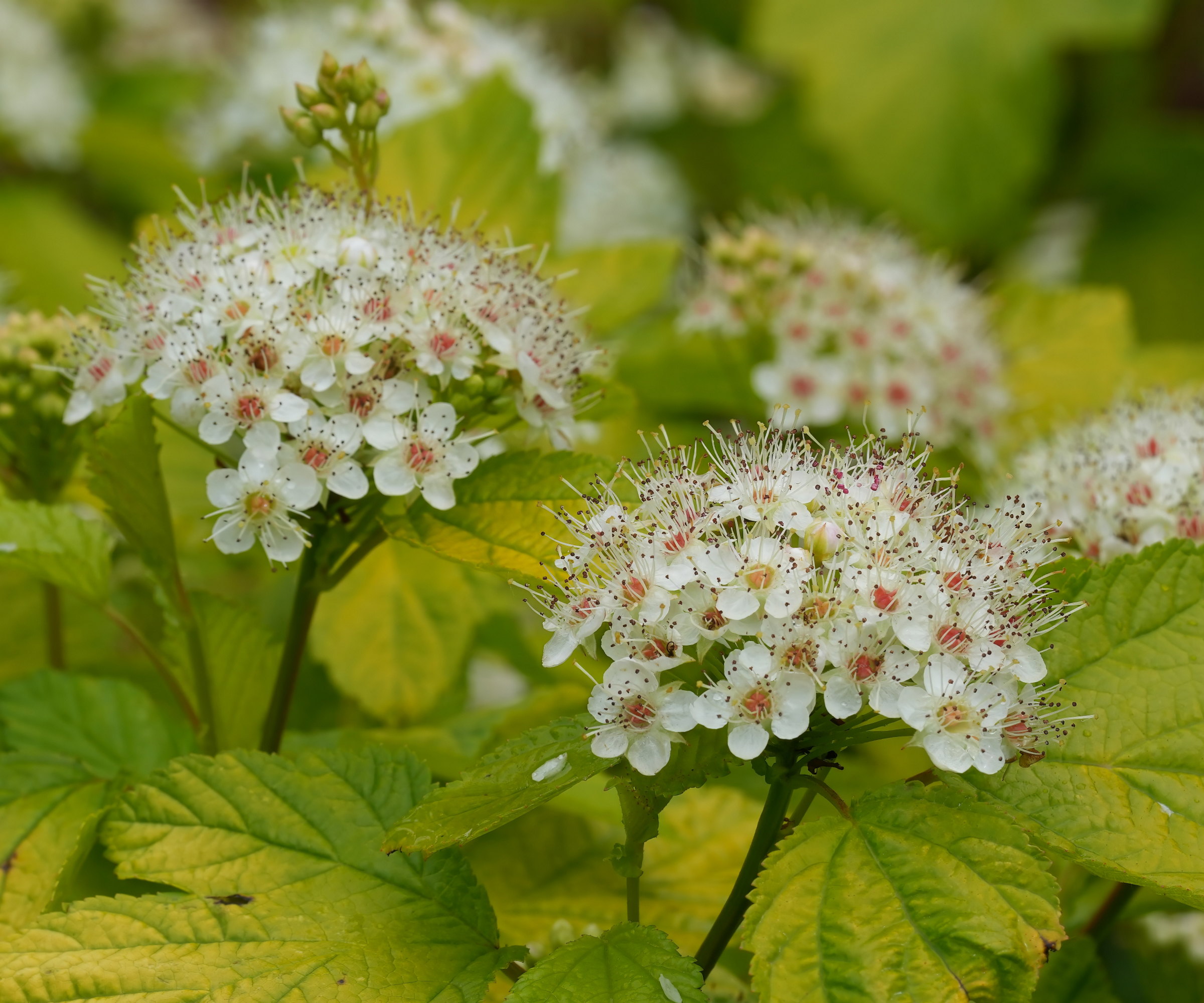
It's also possible to find hydrangea alternatives that offer benefits right throughout the seasons. 'We’ve seen hydrangeas continue to wow, but there’s growing interest in plants that offer a similar presence with even more ecological perks,' says landscaping expert Melissa Rolston. 'That’s why we’re excited about ninebark as a standout alternative.'
Ninebark (Physocarpus opulifolius) delivers all-season appeal, says Melissa. Think lush spring blooms, vibrant summer foliage, striking fall color, and winter bark drama, all with easy-going care and a solid track record for attracting pollinators and birds. Plus, it thrives in tough conditions, including clay and drought.
'This is not a suggestion to replace hydrangeas, but simply offer gardeners an alternative with different strengths: resilience, multi-season interest, ecological value, and distinct character,' explains Melissa. 'I'm recommending ninebark if you want your garden to stay beautiful, natural, and sustainable.'
Find a selection of ninebark varieties at Nature Hills.

Melissa Rolston is the chief strategy officer at Paramount Landscaping, Inc., where she leads innovation, operational excellence, and long-term growth strategies.
4. Encore Azaleas
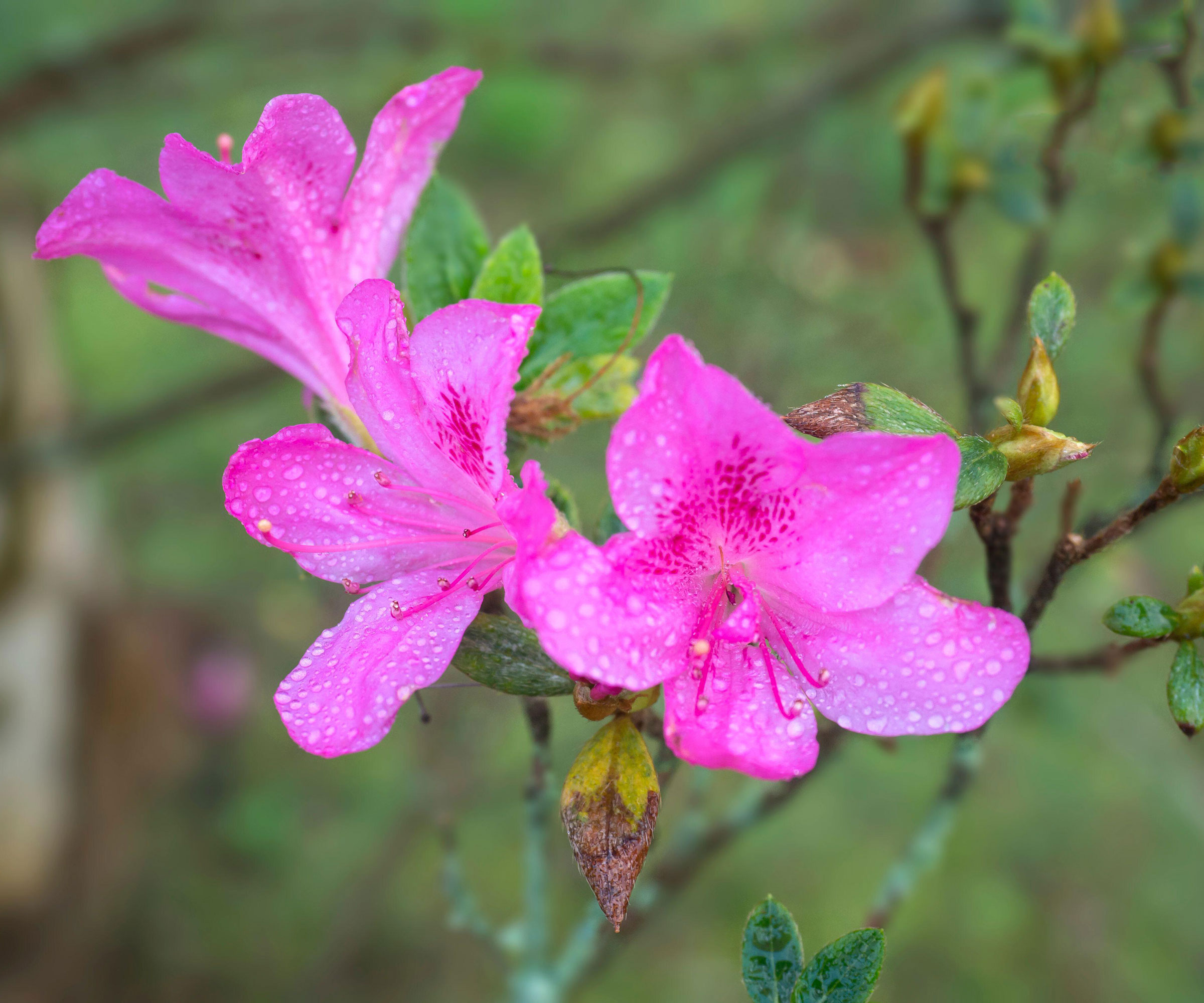
'Autumn Royalty' Encore Azalea
When hydrangeas fade and their branches stand bare in winter, the garden can feel a little empty. But horticultural expert Martin Hackney, one of the managing partners at Hackney Nursery, says there’s a way to keep the color coming.
'Encore azaleas bring bursts of color in spring, fall, and even sporadically in the summer, and the evergreen varieties stay lush green all winter, brightening the garden when hydrangeas are dormant.'
Unlike hydrangeas, which are deciduous and lose their leaves in the colder months, Encore azaleas offer attractive evergreen foliage in the winter and blooms up to three times a year.
'Their low-maintenance nature makes them perfect for gardeners who want beauty without extra fuss,' says Martin. The easiest-to-grow favorites include Encore Autumn Royalty, Encore Autumn Carnation, and Encore Autumn Lily.
Hydrangeas prefer partial and full shade, while most Encore azaleas thrive in partial shade, which means they're a great alternative for hydrangea lovers. 'If you're looking for the best plants for extra-shady spots, Encore 'Autumn Royalty' (pictured above) is our top recommendation,' says Martin.

Martin Hackney one of the managing partners of Hackney Nursery, a family-owned wholesale grower specializing in ornamental plants. Martin brings decades of hands-on horticultural experience, business leadership, and a deep-rooted passion for growing to every aspect of the nursery’s success. Raised in the world of agriculture, Martin's deep understanding of plant production and commitment to sustainable practices have helped shape the business into a trusted name among growers, landscapers, and retailers alike.
5. Red twig dogwoods

Cornus alba 'Sibirica'
'Red twig dogwood should be the next "it" shrub,' says Stephen Black, owner of Westwood Gardens Nursery & Garden Centers. 'These ornamental shrubs bloom in late spring/early summer and, rather like hydrangeas, can take some shade.
Unlike hydrangeas, they have year-round interest with their bright red stems that boldly stand out once all their leaves have fallen in winter.'
Also known as Cornus, most varieties of dogwood also have fruits in fall, providing a welcome ornamental display as well as food for many garden birds. Their flowers and foliage look quite similar to hydrangeas too.
They are adaptable and easily grown in sun or partial shade, which makes them one of the more easy-going hydrangea alternatives to consider.

Stephen Black is the principal owner of Westwood Gardens, a family-owned nursery and garden center that has served Northwest Arkansas for over 50 years. A graduate of Cornell University with a degree in Agriculture and Business, Stephen returned home to join the family business, where he continues to play a key role in its growth.
6. Oregon grape
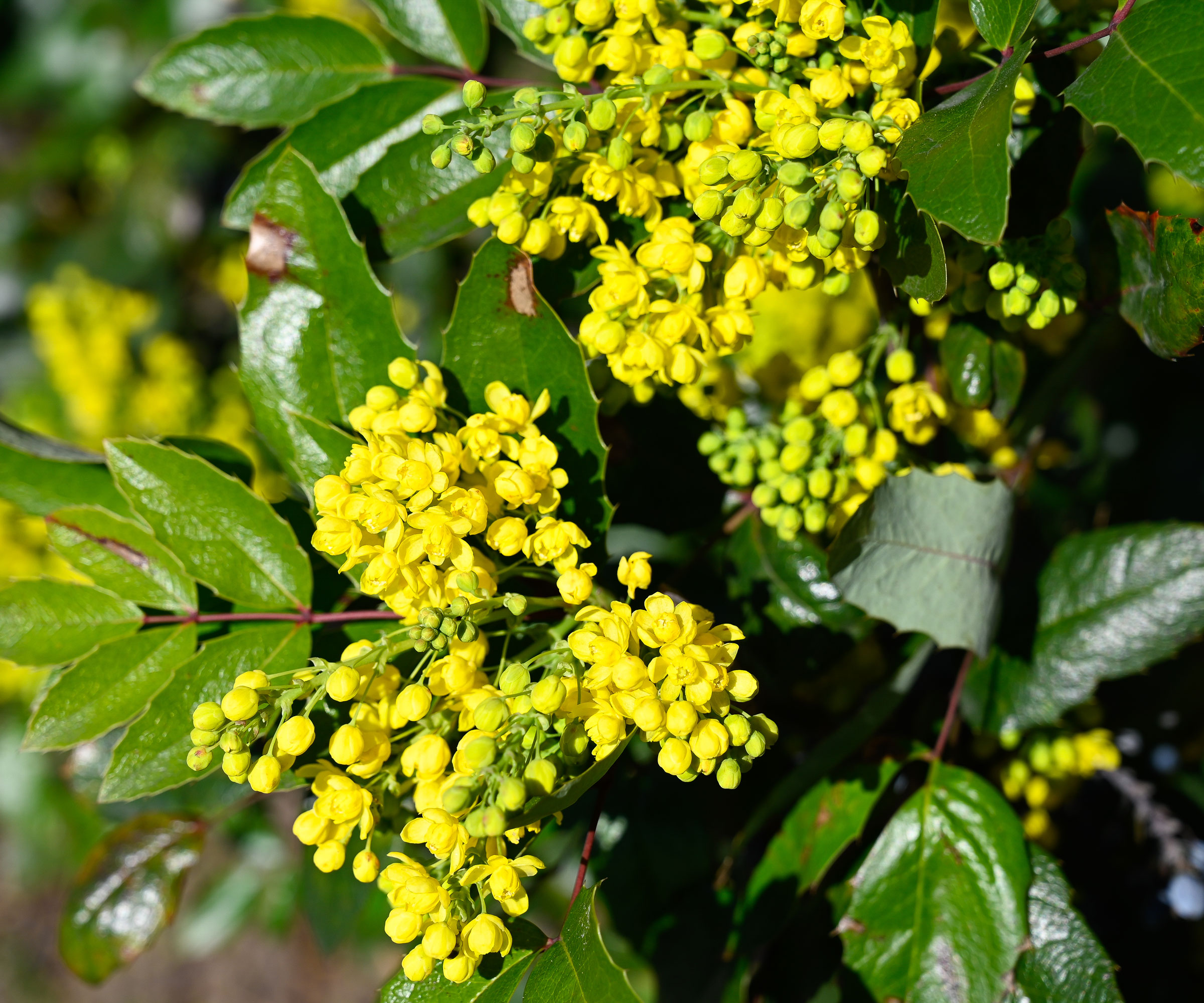
Mahonia aquifolium
'If you're looking for hydrangea alternatives, I’d go with the Oregon grape,' says garden designer Steve Kesselman. 'The flowers are smaller than hydrangea blooms and yellow but still grow in clusters so you get that grouped look.
'It stays green all year and needs almost no care once planted. The deer usually leave it alone too. It also flowers early in spring and grows berries later in the season that attract all kinds of birds.'
When landscaping with Oregon grape, also known as Mahonia, Steve likes to use it under big trees or as evergreen shrubs in spots where people do not want to actively weed or maintain. It also works as a low hedge to break up different areas in a yard if you're interested in using plants as part of garden zoning plans.
Find Oregon grape at Nature Hills.

Steve Kesselman is a garden designer for Puget Construction & Landscape in Bellingham, WA, with over a decade of experience crafting gardens that harmonize with the natural surroundings. He specializes in using native plants and thoughtful design to transform underutilized spaces into inviting outdoor retreats.
7. Buttonbush
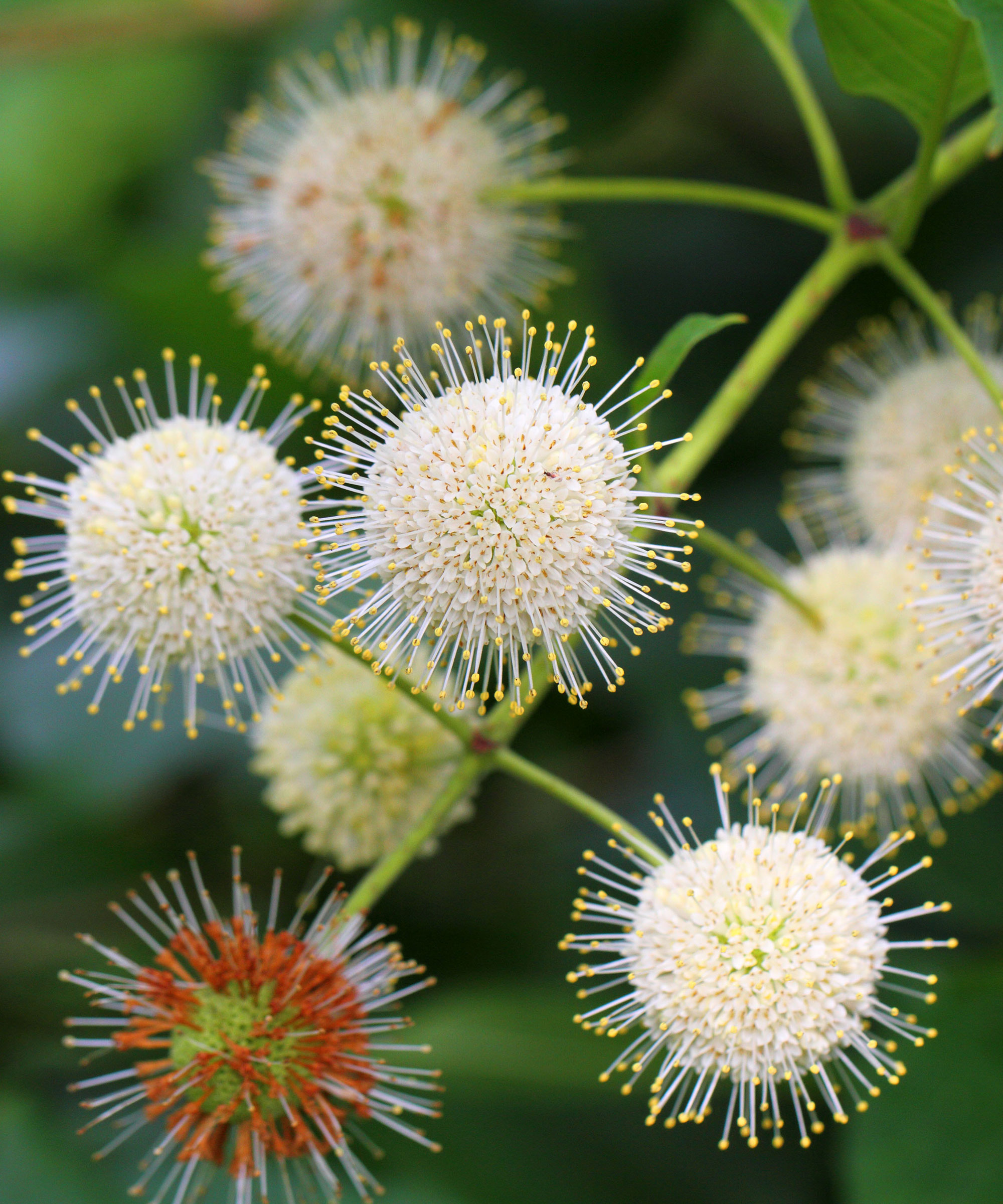
Our final suggestion is from a gardening expert on the Homes & Gardens team. Content editor Thom Rutter has grown hydrangeas in many different gardens over the years, and they are one of his favorite plants.
But in recent years, he has noticed that many gardeners have complained (himself included) about keeping these shrubs alive during challenging and unpredictable summers.
Instead Thom suggests planting buttonbush (Cephalanthus occidentalis). 'It’s a total pollinator magnet, with spherical white blooms that look like little pincushions,' says Thom. 'It handles everything, including wet, dry, heat, you name it.' Buttonbush plants are available from Amazon. Happily it's a native US shrub too.
Our experts made some additional suggestions for hydrangea alternatives too, which are as follows: Stephen Black suggested Althea (rose of Sharon), Chris Verme chose drift roses, while Thom Rutter recommends hibiscus

Lifestyle journalist Sarah Wilson writes about garden design and landscaping trends for Homes & Gardens. She has studied introductory garden and landscape design, and also has an RHS Level 2 qualification in the Principles of Plant Growth and Development. She is a regular contributor to Homes & Gardens and Livingetc. She has also written for Country Living, Country Homes & Interiors, and Modern Gardens magazines
You must confirm your public display name before commenting
Please logout and then login again, you will then be prompted to enter your display name.